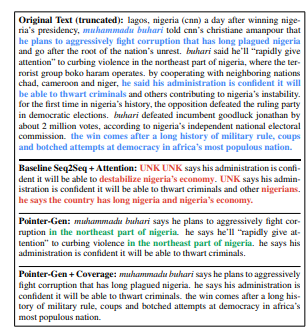An Overview of Neural NLP Milestones
Continuous improvements to translation are important. However, performance improvements have plateaued with SMT technology since the mid-2010s. By leveraging the scale and power of Microsoft’s AI supercomputer, tools like Microsoft Translator now offers neural based translation that enables a new decade of translation quality improvement.
Abstractive Single Document Summarization


Neural NLP has also contributed to benchmarks in the task of abstractive single document summarization. This task enables users to generate short summaries of long documents traditonally this was done using extractive methods that generated a summary by taking direct quotes from the text but advances in neural NLP such as Abigail See’s
Call To Action
Below are some resources to get started with the tools and models above.
- Azure Text Analytics — The Text Analytics API is a cloud-based service that provides advanced natural language processing over raw text, and includes four main functions: sentiment analysis, key phrase extraction, language detection, and entity linking.
- Azure LUIS — A machine learning-based service to build natural language for custom intent classification and basic entity extraction.
- Allen NLP — AllenNLP is an open-source NLP research library, built on PyTorch for developing state-of-the-art deep learning models on a wide variety of linguistic tasks.
- Azure DLVM Machine Reading Comprehension- The Deep Learning Virtual Machine is a specially configured variant of the Data Science Virtual Machine (DSVM) to make it more straightforward to use GPU-based VM instances for training deep learning models. There is a great module for getting started with pyTorch on the DSVM that you can find here.
- SpaCy— spaCy is a free open-source library for Natural Language Processing in Python. It features NER, POS tagging, dependency parsing, word vectors and more.
- HuggingFace- Provide extensions of Spacy for models such as co-reference and sentiment analysis.
Next Post
The next post in this series will review how advancements in representing and modeling with word vectors, has contributed to the progress driving the improvements in NLP systems outlined above.
If you have any questions, comments, or topics you would like me to discuss feel free to follow me on Twitter if there is a milestone you feel I missed please let me know.
About the Author
Aaron (Ari) Bornstein is an avid AI enthusiast with a passion for history, engaging with new technologies and computational medicine. As an Open Source Engineer at Microsoft’s Cloud Developer Advocacy team, he collaborates with Israeli Hi-Tech Community, to solve real world problems with game changing technologies that are then documented, open sourced, and shared with the rest of the world.
